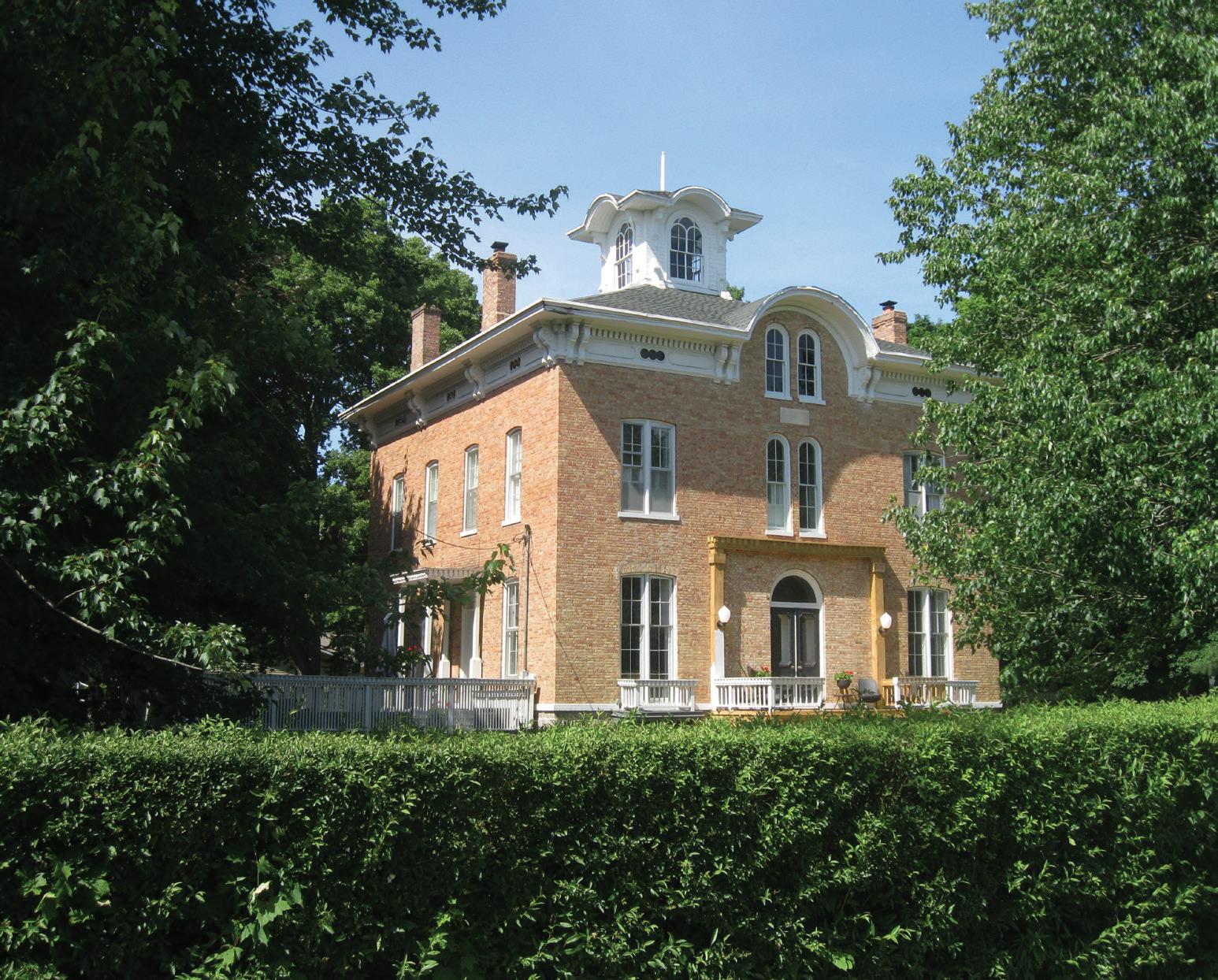
5 minute read
Five Faves
Explore the area with these wonderful walking tours
BY LYNN HOUGHTON
One of the best ways to get to know a community is to walk around it. I have been doing just that for many years, leading free historic walking tours through a number of historic districts, neighborhoods and cemeteries in Kalamazoo. In addition, these tours have explored nearby cities and villages like Richland, Vicksburg and Parchment. The tours are a great opportunity for people to learn the history of a community as well as what is going on in these areas today. Walks occur in the mornings and evenings from June through August and mornings during September and October. These are my top five walks:
Village of Schoolcraft
Kalamazoo is not the only community in the county with interesting history and architecture, so I take the walking tours to visit other cities and villages, including Schoolcraft. At the edge of Prairie Ronde, Schoolcraft became a popular destination after 1830, when Thaddeus Smith and his family arrived. The village still contains wonderful Greek Revival homes that date from those early years, in addition to other styles, including Italianates like the second Nathan and Pamela Thomas home on Cass Street, pictured at right. Their earlier house, a station on the Underground Railroad, was moved farther down Cass Street and is now owned by the Schoolcraft Historical Society. One learns a lot by touring Schoolcraft, including the location of the area known as the “Big Island,” which was once the largest body of trees on Prairie Ronde, the largest prairie in Kalamazoo County.
Parkwyn Village
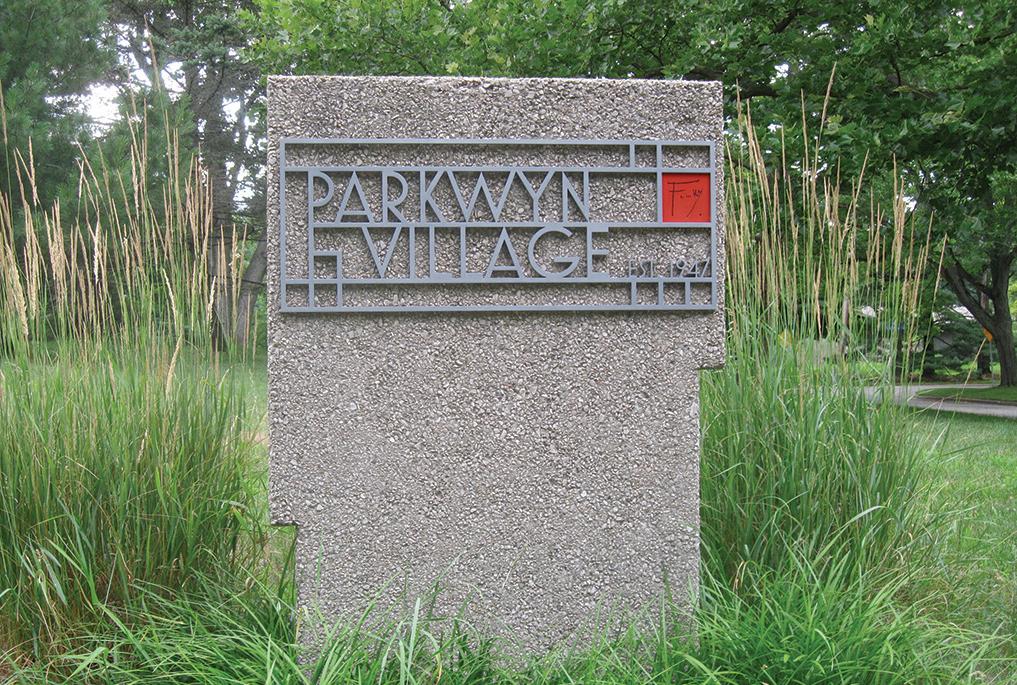
Seventy-five years ago, in 1947, this unique neighborhood was established when a group of individuals banded together to create a cooperative residential community. These individuals purchased 47 acres near Little Asylum Lake. They approached the preeminent American architect Frank Lloyd Wright, who agreed to plan the development. Every time a tour is held in this neighborhood, we are very lucky not only to view and learn about the four houses designed by Wright and those designed by local architects Norman F. Carver Jr. and George Sprau Jr., but also to meet the residents who live here and experts who join us, like Tim Hills, author of the book Norman F. Carver, Jr.: Architect of Form and Space.
Vine Historic District
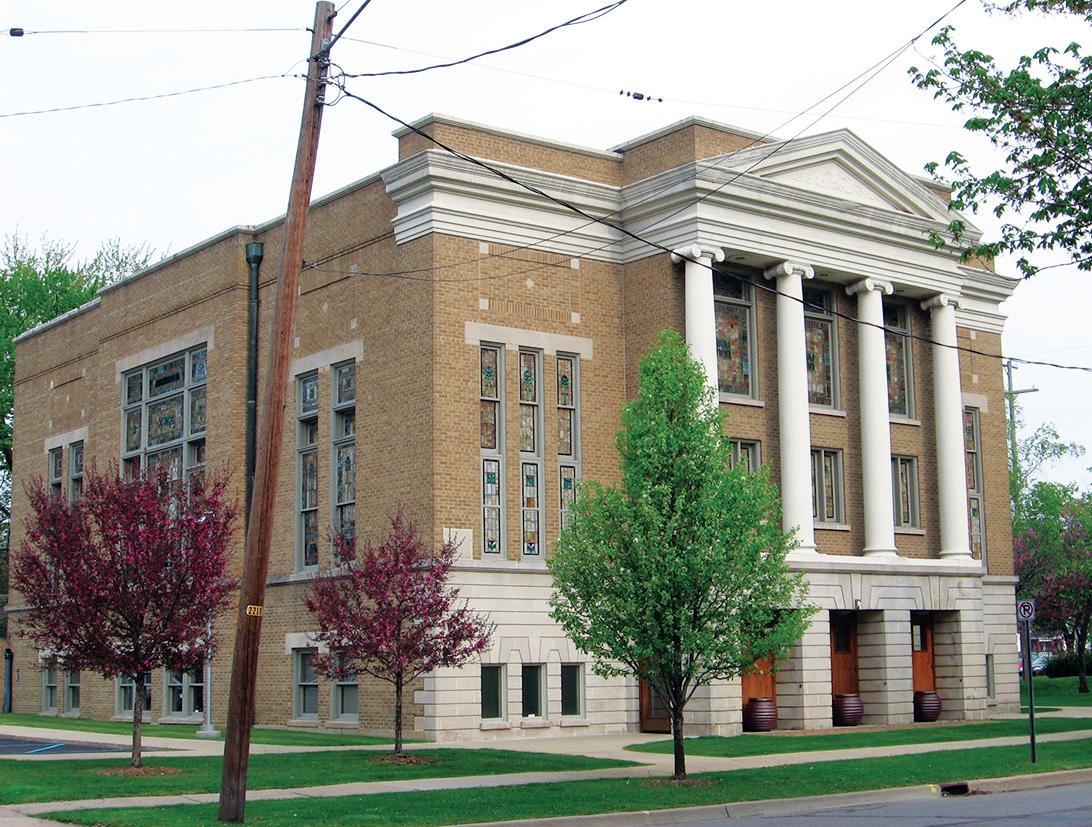
The Vine Historic District is rife with material for not just one, but many walking tours. It is home to Kalamazoo’s first cemetery, two octagon houses and the city’s oldest house. One interesting tour focuses on churches in the neighborhood, both past and present, representing a variety of congregations, including several Christian Reformed and Reformed, due to the number of Dutch immigrants who settled in the area. One church, built in 1926, was once a Christian Reformed congregation on South Park Street and is now home to the firm Diekema Hamann Architecture and Engineering, pictured at left. Some of these church buildings are gone, some continue to serve their members; and some, like this one, are being used for other purposes.
Riverside Cemetery
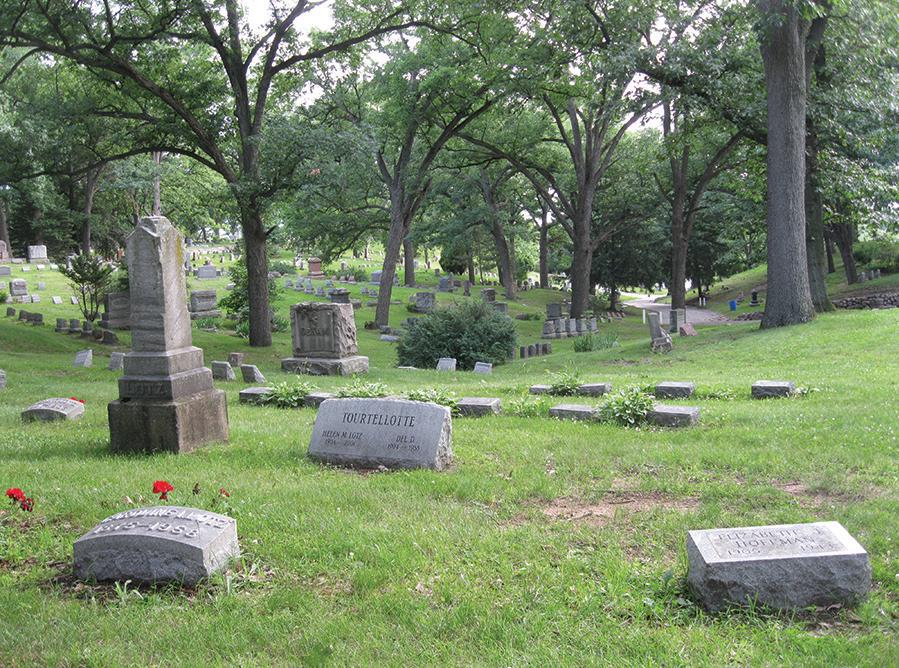
Ihave often shared my love of cemeteries with Encore readers and have visited these final resting places with my brother to decorate family graves and find genealogical information. I chose to take a leap during the fourth year of the historic walking tours and add a cemetery to the schedule. The tours at these locations look at many elements, including the cemetery’s history, design, architecture and symbolism. For years, the tours alternated between Mountain Home Cemetery, along West Main Street, and Riverside Cemetery, at the intersection of Gull Road and Riverview Drive. I admire both of them, but Riverside offers both Jewish and Catholic sections (in addition to the main section), multiple military gravestones, symbolism galore, and enough tree-stump tombstones to keep me satisfied.
Women in Kalamazoo
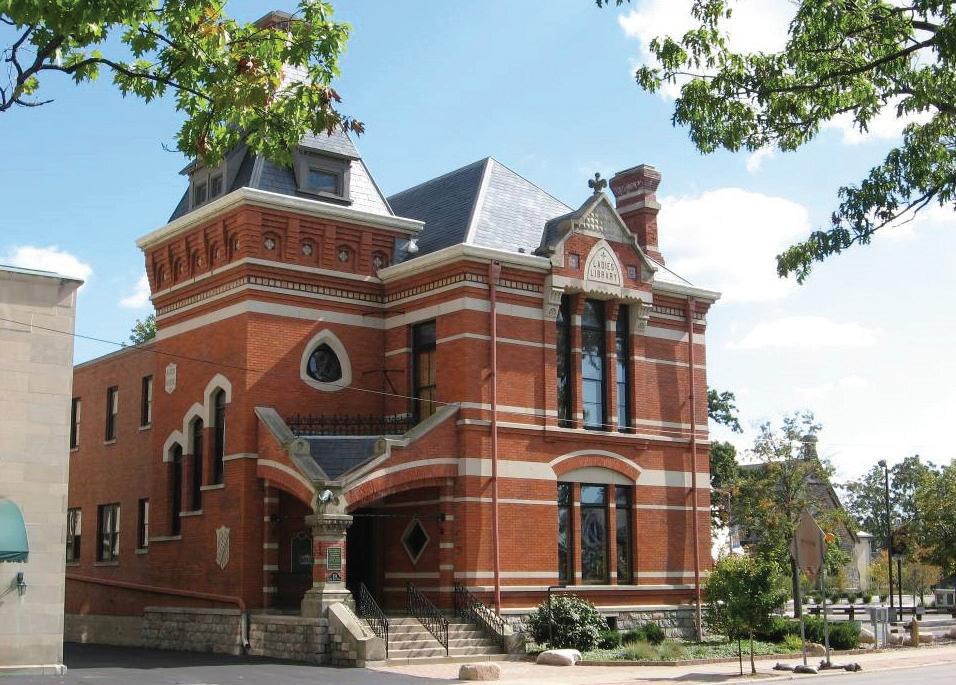
To add to the variety of tours given, I’ve developed several tours with a central theme, including one on women. Many sites in downtown Kalamazoo illustrate the contributions women have made to this community, including both Bronson and Borgess hospitals; the People’s Church, which was headed by the Rev. Caroline Bartlett Crane; and the Ladies Library Association, pictured above, organized in 1852. Also covered are historic businesses such as the Upjohn Co. and the Kalamazoo Corset Co., both of which had a large number of female employees. A favorite site on the tour is what was once the location of Madame JannaschShortt’s Musical Conservatory, on East Michigan Street, where she taught a wide variety of instruments and directed a number of orchestras and a fife and drum corps.
About the Author:
Lynn Houghton is the regional history curator of the Western Michigan University Archives and Regional History Collection. She leads the Gazelle Sports Historic Walks, a series of free architectural and historic walks at various locations in Kalamazoo County that happen during summer and fall, and she is the co-author of Kalamazoo Lost and Found, a book on Kalamazoo history and architecture. She also participated in the PBS documentary series 10 That Changed America, about the history of architecture and urban planning. She has bachelor’s and master’s degrees in history from WMU and a master’s in library and information science from Wayne State University.



